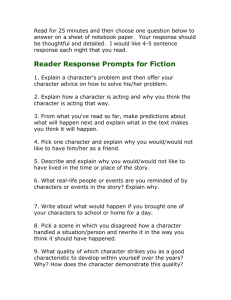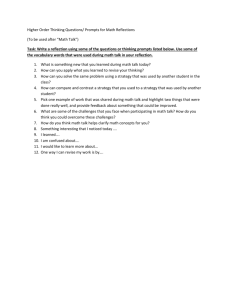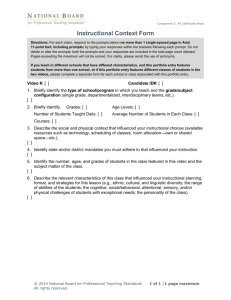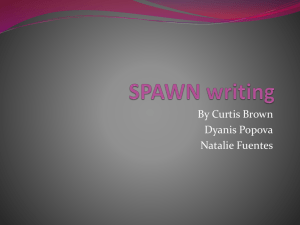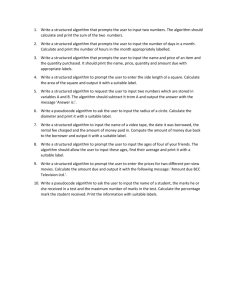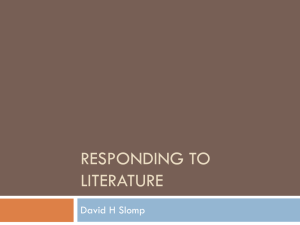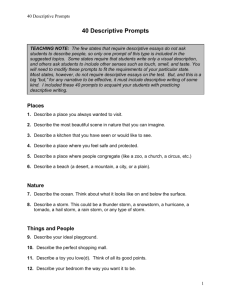The Language of Thinking
advertisement
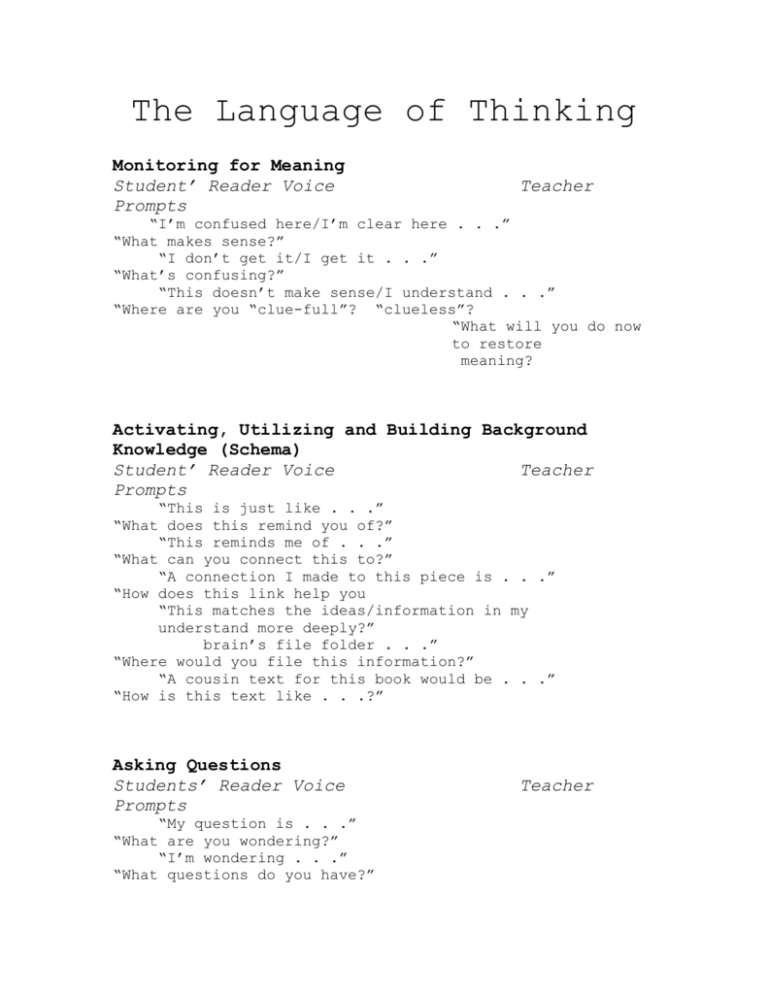
The Language of Thinking Monitoring for Meaning Student’ Reader Voice Prompts Teacher “I’m confused here/I’m clear here . . .” “What makes sense?” “I don’t get it/I get it . . .” “What’s confusing?” “This doesn’t make sense/I understand . . .” “Where are you “clue-full”? “clueless”? “What will you do now to restore meaning? Activating, Utilizing and Building Background Knowledge (Schema) Student’ Reader Voice Teacher Prompts “This is just like . . .” “What does this remind you of?” “This reminds me of . . .” “What can you connect this to?” “A connection I made to this piece is . . .” “How does this link help you “This matches the ideas/information in my understand more deeply?” brain’s file folder . . .” “Where would you file this information?” “A cousin text for this book would be . . .” “How is this text like . . .?” Asking Questions Students’ Reader Voice Prompts “My question is . . .” “What are you wondering?” “I’m wondering . . .” “What questions do you have?” Teacher “How . . . what . . . why . . . when . . . who . . .” “In what ways will those questions “I wonder . . . and I found out . . .” help you understand this? “What are you curious about?” Drawing Inferences Students’ Reader Voice Prompts Teacher “I’m thinking that . . .” “What are you thinking?” “I predict . . .” “What conclusions can you draw?” “Even though the text doesn’t say so, I think . . .” “How does this thinking beyond the text “I bet . . . I knew it . . .” help you make deeper meaning of your reading?” Determining Importance Students’ Reader Voice Prompts Teacher “I think this is really important . . .” “So, what’s essential here?” “This is essential . . . This is extra . . .” “Is that important to understand?” “When I sort all this our, these things seem to stick . . .” “How does the author show us what s/he “I’ll remember . . .” thinks is important?” “I learned . . .” “What are the main ideas/messages in “The big ideas here are . . .” this text?” “What does the author what us to learn from this piece? Creating Sensory Images Students’ Reader Voice Prompts Teacher “In my mind, I can see/hear/smell/feel/taste . . .” “When you read that, what did you “My image is . . .” see/hear/smell/feel/taste?” “The movie in my head . . .” “What words led you to that image?” “The picture is on/off . . .” “How does that image help you “Painting a portrait of my reading, I saw . . .” understand this text?” Synthesizing Information and Ideas Students’ Reader Voice Prompts Teacher “At first I thought . . . but now I’m thinking . . .” “Now what are you thinking?” “Now I understand that . . .” “What’s changed about your ideas/ “Like putting a puzzle together, the pieces thinking?” of my reading are . . .” “Tell me about the quilt of you thinking.” Problem Solving Students’ Reader Voice Prompts Teacher “I think I’ll reread to make better sense . . .” “So, what did you do to repair “I’m going to slow down here . . .” meaning?” “What a minute, I’m not making sense here . . .” “Now what are you going to do?” “Knowing that it doesn’t make sense is only part of the work. Now you have to fix it up to make better sense.” Adapted from L Benson, Colorado Reads ©PEBC Conrad


